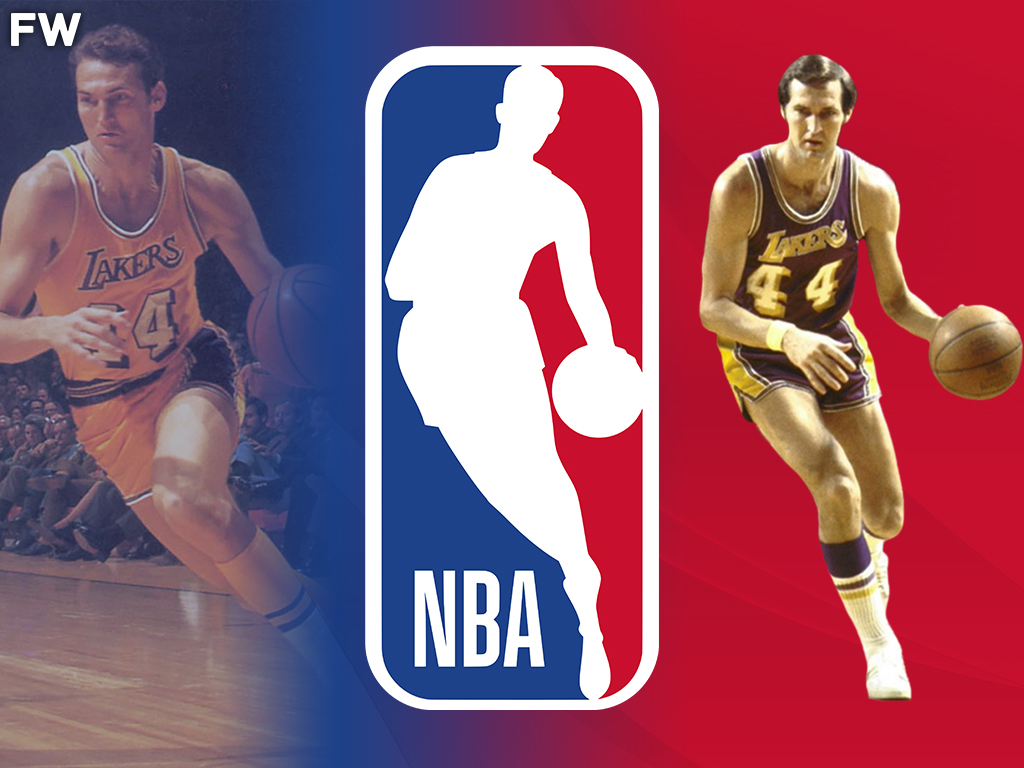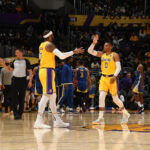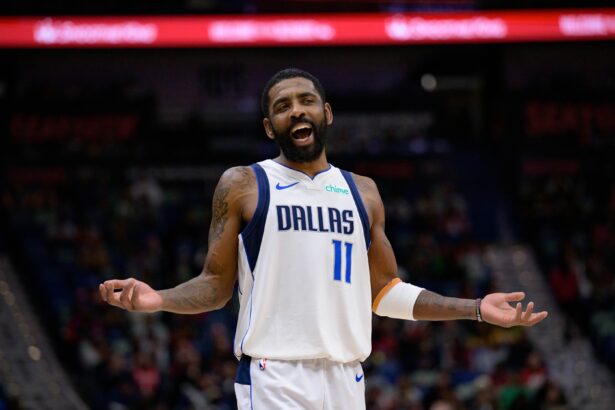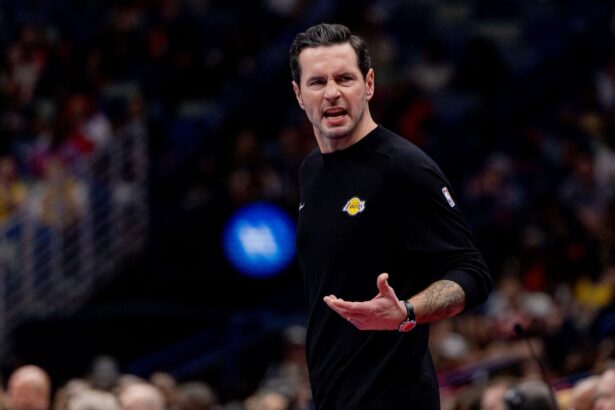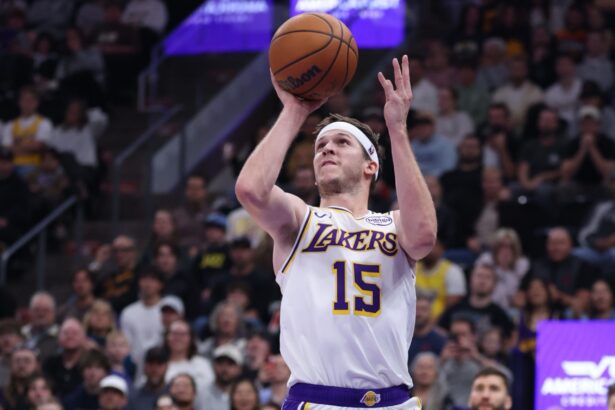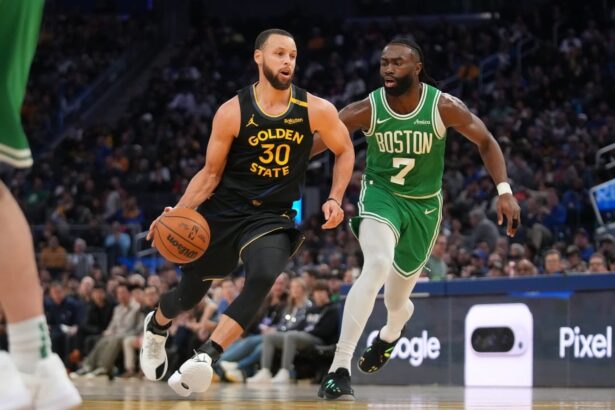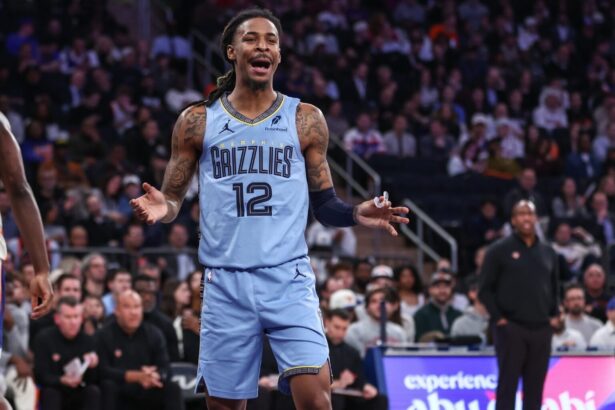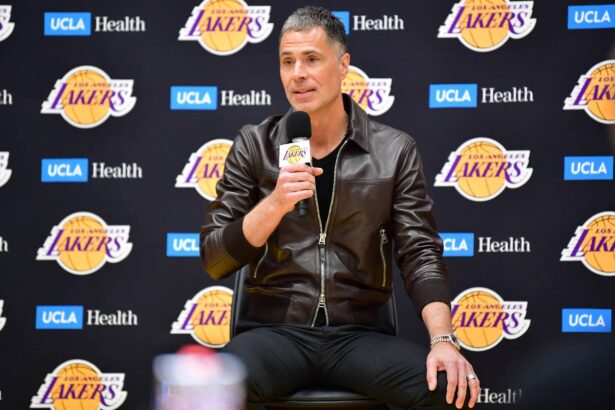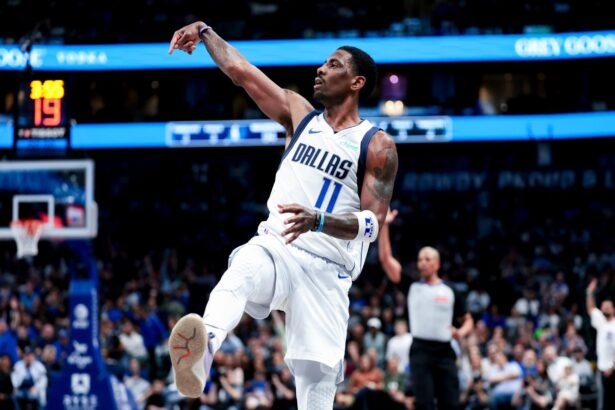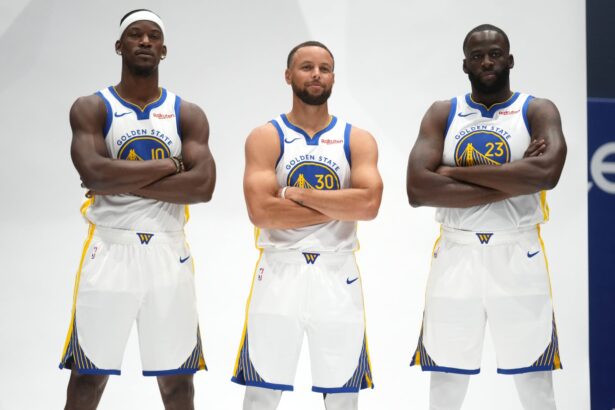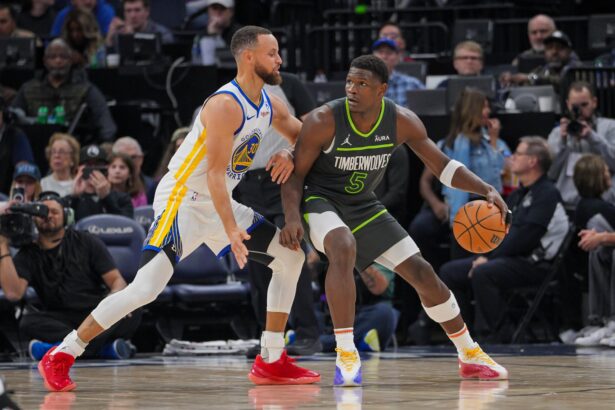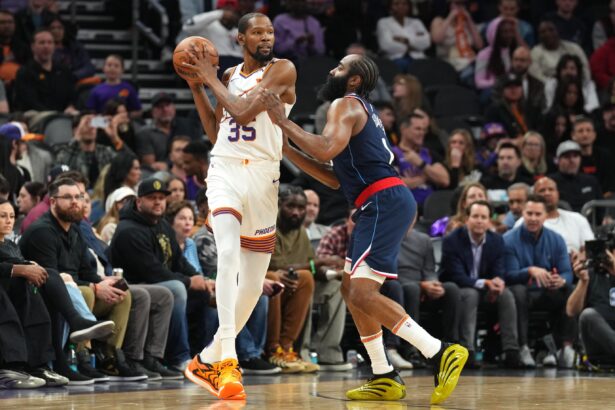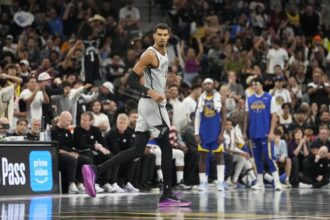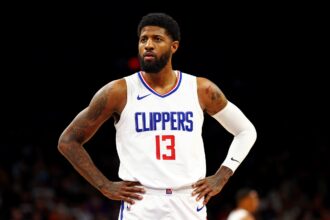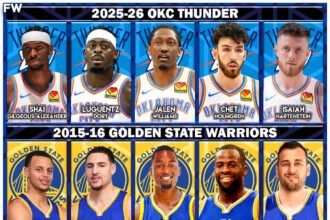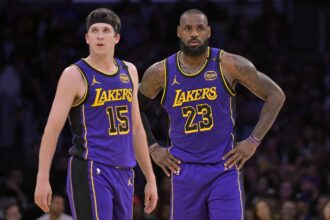We as NBA fans all know and love the iconic logo of the league. The silhouette of a player dribbling is embedded in our minds.
- Birth Of The Logo
- Next
- Little Mamba: The Story Of How Kobe Bryant Became The Black Mamba
- Junior Bridgeman Business Story: From $350k To $600 Million
- From Being Drafted 3 Times To Playing The Most Games In NBA History: The Robert Parish Story
- When Wat Misaka, Earl Lloyd, Chuck Cooper, And Nat “Sweetwater” Clifton Became The First Non-White NBA Players
- The Man Who Was “Better” Than Michael Jordan: The Incredible Rise And Tragic Fall Of Len Bias
In recent years, there’s been talk about possibly changing the logo to the likeness of Michael Jordan or even the late great Kobe Bryant.
If you ask most fans, though, they’d say keep the logo the same, keep it Jerry West.
Yes, it’s recognized that Jerry West is the logo, it’s his silhouette. But did you know that the NBA completely denies the fact West is the logo?
That’s right. The NBA has never confirmed that Jerry West is the logo, and their reasoning for this is… money.
The NBA would have to pay West royalties, and this is something they want to avoid doing. But the question is, would West seek money from the league?
No, West hasn’t and wouldn’t. In fact, West doesn’t even like the idea of being the logo, it makes him cringe.
“I don’t know, I don’t like to do anything to call attention to myself,” West explained. “And when people say that, it’s just not who I am, period. If they would want to change it, I wish they would. In many ways, I wish they would.”
West is a very humble person, who, despite his fame, doesn’t like to draw attention to himself. With everyone knowing him as the logo, it keeps him in the minds of fans, even the young fans of today know him as the logo.
In an interview West gave in 2015, he nominated Michael Jordan to become the new logo of the league:
“He’s been the greatest player I’ve ever seen. And I’m probably a harsh judge of talent, in the sense that I admire players that are really good defensive players and really good offensive players. . . . And he made his teams win.”
West had an incredible playing career. He averaged 27.0 points per game, which is fifth all-time. He also averaged 6.7 assists and 5.8 rebounds per game.
West is the only player to ever win the Finals MVP while having his team lose. This happened in the 1968-69 NBA Finals, between the Los Angeles Lakers and the Boston Celtics.
The Finals that year was the first time the league gave out the award, and West played great in the series. He averaged 37.9 points, 7.4 assists, and 4.7 rebounds per game.
Even with West’s great performance, and the fact he had teammates named Wilt Chamberlain and Elgin Baylor, the Lakers just couldn’t beat Bill Russell.
This series would be the last for Russell, and he went out a winner… an 11-time winner.
West’s playing career, even though great, was often overshadowed by his failures. He reached the NBA Finals nine times, but only won the championship once.
West’s Finals record, 1-8, makes him the player with the most Finals losses. But even with those losses, West is still regarded as one of the best to ever play.
West recently made the NBA’s top 75 all-time players list. Another great honor to add to his legacy.
After retiring from the league in 1974, West saw massive success in the front offices of the Lakers, Grizzlies, Warriors, and currently the Clippers.
West has been credited with creating the 1980s Lakers dynasty, which brought five championship rings (1980, 1982, 1985, 1987, and 1988).
West is also famous for making the trade of Vlade Divac for the draft rights to Kobe Bryant in the 1996 NBA Draft. The trade also freed up space for the Lakers to sign Shaquille O’Neal.
West joined the Golden State Warriors front office in 2011, and he was a part of their 2015 and 2017 championships.
In his front office career, West has been a part of 8 championships, and he was named NBA Executive of the Year twice (1995, 2004).
Even with his success as a player and an executive, West is still remembered most for being the NBA logo.
Birth Of The Logo
The NBA logo was designed in 1969 by Alan Siegel, founder of the branding firm Siegel+Gale.
The NBA was in desperate need of a new, fancier logo. The league was struggling with viewership, and they were in competition with the growing American Basketball Association (ABA).
So, Siegel went to work, trying to come up with the new logo. He eventually came across an issue of the magazine, Sport magazine.
The magazine had a photo of basketball superstar Jerry West. Siegel immediately knew this would be his inspiration for the logo, and the rest is history.
Siegel has been asked if West was the only player he considered for the logo:
“I looked at some logos where there were hands up around the net and the ball. I looked at Kareem Abdul-Jabbar’s hook shot. I looked at Wilt Chamberlain, Tom Havlicek, Tim Gola, and a few others that I remember. The one with West just really worked. It was really kind of elegant and classic. At the time, he was on the All-Star team like 12 times. He was the MVP in one of the Finals.”
Jerry West may want to see the logo changed, and many fans might agree with him, but that most likely will not happen.
The NBA logo is a world-recognized symbol. It’s on merchandise, from clothing and apparel to posters, to everything in between.
The logo is a huge moneymaker, and because of this, it may never change.

